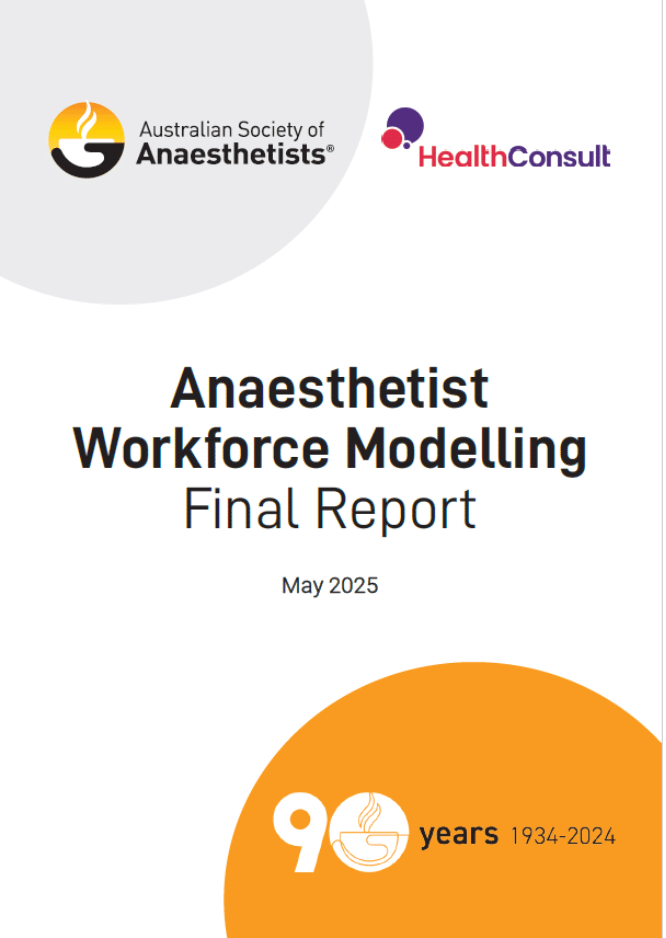Updated May 2025
The mission of the ASA is to support members and advance their skills while advocating for the specialty to ensure safe and high-quality patient care for the Australian public. This is to ensure an accessible, equitable health system.
The ASA has commissioned a report by HealthConsult to explore the current state of the anaesthetist workforce in Australia and develop a workforce planning model up to 2032. The report was launched at Parliament House, Canberra on 14th August 2024.

Key findings
- Demand for anaesthetic services is expected to increase by 35.7% between 2017 and 2032.
- The anaesthetist workforce in Australia is predicted to increase only 31.8% in this time, from 4,594 to 6,055 anaesthetists.
- In 2027 there is estimated to be a 4 per cent shortfall gap between the forecast and required workforce.
- By 2032, the forecast workforce shortfall is expected to reach a 5.7 per cent.
- One fifth of anaesthetists are expected to retire within five years (National Health Workforce Dataset (NHWDS)).
- Anaesthetists’ working hours are unlikely to match workload into the future.
Meeting the 2025 & Beyond Workforce Challenge
Addressing Australia’s medical workforce challenges requires a multifaceted and collaborative approach involving government agencies, healthcare institutions, educational providers, and professional associations.
In May 2025 the ASA republished this report to include four recommendations to meet this challenge:
Recommendation 1: The ASA recommends that at least 50 more anaesthesia trainees are employed each year.
Recommendation 2: Maintaining the current medical model of anaesthetic care will ensure the safety and quality of outcomes for patients.
Recommendation 3: Current processes for credentialling specialist international medical graduates (SIMG) should be maintained.
Recommendation 4: It is essential that more domestically qualified general practice (GP) anaesthetists are also trained and incentivised with a view to ensuring retention and supporting services in regional communities.

